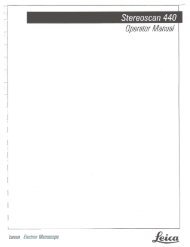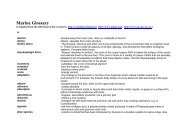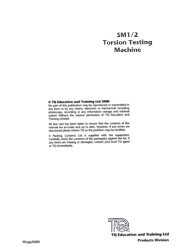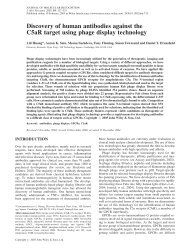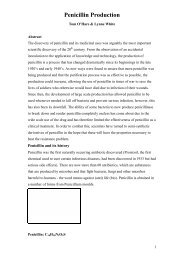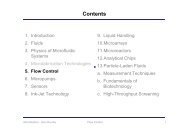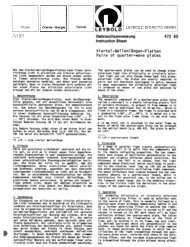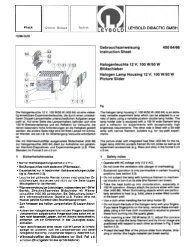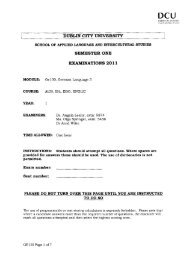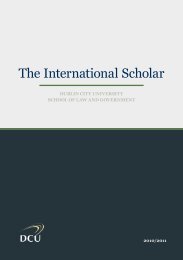The International Lenin School - DCU
The International Lenin School - DCU
The International Lenin School - DCU
Create successful ePaper yourself
Turn your PDF publications into a flip-book with our unique Google optimized e-Paper software.
<strong>The</strong> <strong>International</strong> <strong>Lenin</strong> <strong>School</strong><br />
Professor Helena Sheehan<br />
Dublin City University<br />
helena.sheehan@dcu.ie
Questions<br />
• What role did the ILS play in the world communist movement?<br />
• Why was it formed?<br />
• Who were its teachers and students?<br />
• What was its curriculum?<br />
• Why was it so clandestine?<br />
• What were its boundaries?<br />
• What were the consequences of transgression?<br />
• How did the post-Comintern school differ from the Comintern school?<br />
• What was the experience of Irish communists during each period?<br />
• What sources are available to shed light on these questions?<br />
• Which archives are accessible and which are still inaccessible?<br />
• How much personal testimony is available?<br />
• What secrets have been revealed?<br />
• What is still hidden? Why?<br />
• What conclusions can be drawn at this stage?
What? Why?<br />
• clandestine school run up by EC CI<br />
& later by ID / CPSU<br />
• to train leaders of communist movement<br />
• to facilitate bolshevisation process<br />
• to raise level of work in philosophy, political economy,<br />
history, strategy & tactics
When?<br />
• Resolution of 5 th World Congress of Comintern in 1924<br />
• Opening in May 1926<br />
• 1926 to 1938 to 1943 (dissolution of Comintern) (under ECCI)<br />
From 1938 only illegals<br />
• Post-war to 1991 (end of USSR) (under ID / CPSU)<br />
From 1962 separate schools for communists in socialist & capitalist countries
Who? Its teachers<br />
• 1 st director: NI Bukharin (1888-1938)<br />
• 2 nd director: Bela Kun (1886-1938)<br />
• Comintern intellectuals<br />
• Soviet intelligentsia<br />
• innovative teaching methods<br />
• effects of ideological struggles & purges
Who? Its students<br />
• members of communist parties with leadership qualities<br />
• 2500-3000 from 1926 to 1938<br />
• criteria: age, background, party experience, etc<br />
• primarily single males under 35<br />
• organised into groups who spoke Russian, English,<br />
French, German, later other languages<br />
• known through pseudonyms<br />
• also members of CPSU & active in Comintern<br />
• called ‘little <strong>Lenin</strong>s’ by Larkin<br />
• called ‘strangers in their own land’ on return to NZ
Who?<br />
Graduates became<br />
• heads of state<br />
• members of parliament<br />
• communist party leaders<br />
• trade union leaders<br />
• brigadistas<br />
• spies & spymasters<br />
• professors<br />
• prisoners<br />
• ‘renegades’<br />
Alexander Dubchek * Markus Wolf * Josip Broz Tito * David Siqueiros * Nikolaos Zachariadis * Thabo Mbeki<br />
Also Wladyslaw Gomulka, Erich Honecker, Waldek Rochet, Moses Kotane, Harry Wicks, Ted Tripp, Morris Childs
Where?<br />
• Ulista Vorovskogo 25 in Moscow<br />
• Miusskaya Plashad 6 in Moscow<br />
• Kushnarenkovo in Bashkiria<br />
• <strong>Lenin</strong>gradsky Prospekt 49 in Moscow<br />
• freedom of movement varied in different periods as did rules on many matters
<strong>The</strong> Larkins, IWL & Comintern<br />
• ups & downs of Larkin & Comintern<br />
• members of IWL to ILS<br />
• purge of Larkinism at ILS
Irish at ILS<br />
1926-1938<br />
21 (20 male)<br />
their fates<br />
• SM: GS of CPI<br />
• JL: TD, Pres of ICTU, GS of WUI<br />
• LMcG: died in Spain<br />
• PB: perished in purges<br />
• BS: Sec of BTC, etc
Twists & turns of Comintern<br />
& chistkas at ILS<br />
• 1929 new turn in USSR<br />
• 3 rd period of Comintern<br />
• classes suspended<br />
• purge of Bukharinism<br />
• move v II tendencies in other parties<br />
• purge of Larkinsm<br />
– Jim Larkin Jr replaced as partorg<br />
– Pat Breslin expelled<br />
• post-Kirov purges & Prendergast recantation<br />
• ‘Stalin’s sausage machine’?<br />
• terror tightened & took toll on teachers<br />
• 1938 legals departed<br />
• 1938-1943 illegals remained under heavy security
Patrick Breslin 1907-1942<br />
• joined CPI in 1922<br />
• studied at ILS 1928-1930<br />
• arrested in 1940<br />
• died in 1942
Betty Sinclair 1910-1981<br />
• CPI<br />
• ILS<br />
• NICRA<br />
• BTC<br />
• WMR<br />
• diaries in CPI archives
Sources for ILS in Comintern period<br />
books<br />
• primary<br />
• secondary<br />
Also articles in journals & chapters in books<br />
Studies of British, Finnish, Swiss, Chinese, etc at ILS<br />
Most research since mid-1990s
Sources for post-Comintern ILS<br />
• very little published<br />
• memoirs of participants<br />
• books of surrounding history<br />
• articles<br />
• personal notes & memories<br />
• personal communications with other participants<br />
• unpublished ms (myself as primary source)
Post-war ILS (aka) Institute of Social Sciences<br />
• <strong>International</strong> Dept of CPSU<br />
• higher party school<br />
• separation of communists from<br />
socialist & capitalist countries<br />
• <strong>Lenin</strong>gradsky Prospekt 49<br />
• Until end of USSR 1991
CIA doc<br />
My notes<br />
(partially declassified)<br />
• Since 1960s, estimate of 167,000<br />
from non-communist countries<br />
travelled to USSR for education /<br />
training<br />
• Of these, a select group of 10,500<br />
sent to Institute of Social Sciences of<br />
CPSU > 450 graduates a year<br />
• 600 employees<br />
• Of whom, 270 members of CPSU or<br />
Komsomol<br />
• All professors & interpreters in CPSU<br />
or K<br />
• An unspecified number were KGB<br />
• Obviously, some of these were CIA<br />
spies
CPI at ILS 1972-1991<br />
• one person for one year in 1972<br />
• groups for 3 weeks in July from 1974<br />
• lectures in philosophy, political economy, history, strategy<br />
• focus on soviet studies
• lectures<br />
• excursions<br />
• parties<br />
CPI at ILS 1977
CPI at ILS 1977<br />
To Lithuania<br />
• factories<br />
• museum<br />
• party meetings
Researching, lecturing & broadcasting in<br />
Moscow 1978<br />
• Institute of Social Sciences / ILS<br />
• lectures, conferences, rituals, socials<br />
• Institute of Philosophy, Academy of Sciences<br />
• Moscow University<br />
• <strong>Lenin</strong> Library<br />
• Moscow Radio<br />
• Moscow News<br />
• Moscow at large
Workers Party at ILS<br />
• 1983 to 1991<br />
• CPI v WP in international arena
Professors & perestroika<br />
• <strong>International</strong> Dept of CPSU<br />
• elite of party intelligenstia<br />
• moved between Prague & Moscow<br />
• range of positions, but base for precursors of perestroika<br />
• some semi-dissidents<br />
• from implicit to explicit in post-1985 period
Professors & apparatchiks at ILS<br />
Where are they now?<br />
• dead or alive?<br />
• left or right?<br />
• evasive or forthcoming?<br />
Vladimir Shubin, Vadim Zagladin, Fydor Burlatsky, Evgeny<br />
Novikov, Yuri Zamoshkin, Yuri Sherkovin, Valery Terin
Graduates still in leading positions<br />
Presidents in 2013<br />
eg, Cyprus & Ghana<br />
Still many government ministers, trade union<br />
officials, professors, political activists, etc
End of ILS / End of USSR<br />
• Gorbachev Foundation<br />
• archives of <strong>International</strong><br />
Dept of CPSU
Now > Finance Academy
Where there was once the USSR,<br />
there came the new world order.<br />
Whereas the communist movement once dominated the left,<br />
new forms of left political organisation and political education still emerging.
Conclusions<br />
<strong>The</strong> story of the ILS is the story of the<br />
communist movement. It’s a thread<br />
woven through all the twists and<br />
turns from 1926 to 199.<br />
• progressive push to change the<br />
world, to expropriate the<br />
expropriators, to liberate labour<br />
• only revolution for decades in<br />
conditions of underdevelopment<br />
• struggle for power gave edge to most<br />
ruthless<br />
• alternative paths undermined<br />
• interests of international movement<br />
subordinated to national interests of<br />
USSR<br />
• CPs survive, but best of movement<br />
carried on in new formations



